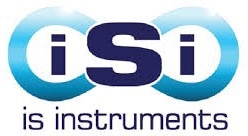Sponsored Content by IS InstrumentsReviewed by Olivia FrostAug 22 2025
Dementia impacts millions of individuals around the world. It significantly impairs memory, cognition, and daily functioning, and is one of the leading causes of death in England. As the population ages, it is expected to become even more prevalent, making early and precise diagnosis critical for improving patient outcomes and healthcare planning.

Image Credit: IS Instruments
Current diagnostic approaches depend on cognitive testing, imaging, and invasive procedures such as cerebrospinal fluid analysis. These techniques are expensive and not always definitive.
Finding reliable biomarkers in blood could transform dementia diagnosis, providing a faster and far less invasive test. Deep UV Raman spectroscopy offers a promising solution by detecting subtle biochemical alterations in serum samples. In contrast to traditional Raman approaches, deep UV Raman minimizes fluorescence interference, improving both sensitivity and specificity in biomarker detection.
This technical note investigates the potential of deep UV Raman technology in dementia studies, outlining its benefits, limitations, and recent developments. With further validation, this novel technique could enable earlier and more accurate diagnoses, ultimately enhancing treatment strategies and patient care.
Background
Dementia encompasses a range of brain diseases that adversely affect memory, language, and cognitive abilities, leading to disruptions in daily life.
As age is the singular most significant factor in dementia, an ageing population will inevitably see a rise in the number of cases of the disease. Early identification will guide local and national health and care policies, as well as dementia studies. This should lead to enhanced patient outcomes. The focus is on developing rapid and dependable testing strategies for earlier and more definitive diagnoses.
Estimates suggest that almost one million individuals in the UK live with dementia, with up to one-third remaining undiagnosed. This number is anticipated to rise to 1.4 million by 2040. Life expectancy for those with dementia ranges from five to ten years, depending on the type of dementia and the individual’s age. Related expenses are expected to increase from approximately £42 billion in 2024 to £94 billion by 2040.
So, understanding the prevalence of dementia and the specific type, such as Alzheimer’s, vascular, or Lewy body disease, is crucial for predicting life expectancy and planning treatment. Different causes must be identified and addressed in various ways.
Current diagnostic methods
Currently, dementia is diagnosed through a combination of methods that evaluate cognitive function and rule out other conditions with overlapping symptoms, such as thyroid issues or vitamin deficiencies.
- Medical history and physical examination
- Laboratory testing
- Psychiatric assessment
- Cognitive and neuropsychological assessments
- Neurological evaluation
- Brain imaging
Novel testing methods that target blood or similar fluid samples are highly sought after, especially those that can identify key biomarkers early.
Biomarkers in serum samples for dementia have been proposed as a potential solution; however, this approach faces considerable obstacles, including the distinct pathological features of different neurodegenerative diseases.
Each type progresses through distinct biological mechanisms—such as amyloid plaques, tau tangles, neuroinflammation, and vascular damage—complicating the identification of a single biomarker. Current biomarker detection methods, such as cerebrospinal fluid (CSF) analysis and PET scans, involve expensive and invasive procedures.
The potential biomarkers of dementia have also been identified in the normal aging process and other neurological disorders. This reduces their specificity, making diagnosis harder. Genetic predispositions, including the APOE ε4 allele, influence dementia risk, while environmental and lifestyle factors add further complexity.
However, the potential benefits of discovering a reliable blood-based technique for diagnosing dementia justifies continued research and investigation into the disease.
To this end, ISI is collaborating on the DEMBIO project, managed through Innovate UK, with Fraunhofer UK, the University of Strathclyde, Corewell Health, and Wide Blue. The goal is to utilize deep UV Raman technology to achieve definitive clinical diagnosis by identifying biomarkers in serum samples.
Researchers have employed Raman spectroscopy to detect variations in plasma proteins, lipids, and metabolites in individuals with Alzheimer’s Disease (AD). This demonstrates its potential to distinguish AD patients from healthy subjects using spectral fingerprinting. Raman spectroscopy is currently used to identify amyloid-beta peptides and tau proteins, both key indicators of AD.
Raman spectroscopy is a useful tool for dementia detection: it is minimally invasive, rapid, label-free, and capable of detecting biochemical changes with high sensitivity, especially when combined with Surface Enhanced Raman technology.
However, there are several drawbacks, including spectral overlap, which complicates data interpretation, especially because biologics produce substantial fluorescence that can obscure Raman signals.
Deep UV Raman minimizes the fluorescence effect. ISI has engineered a tool operating at 236 nanometers, far into the UV range where fluorescence and Raman signatures become spectrally separated, enabling the analysis of complex biological materials. As a result, it offers a promising solution to the challenge of identifying serum-based biomarkers.

Typical serum dementia sample acquired using Odin, ISI’s compact deep UV Raman spectrometer. Image Credit: IS Instruments
Although final measurements are still being taken, initial results are auspicious. They suggest deep UV Raman can detect changes in serum samples that indicate neurodegeneration. The next phase will be to perform more comprehensive clinical trials across a broader demographic to collect more data and more accurately determine the potential of deep UV Raman for this application.
This is exciting progress, and we hope to use it to determine not only the presence of neurodegenerative diseases but also to assist in identifying which disease. This will enable earlier detection and potentially better outcomes for patients.
Dr. Michael Foster, Director at IS-Instruments
Funding details
DEMBIO was an SBRI competition launched in July 2023 and funded by Innovate UK. The program invited organizations to apply for a share of £6 million, including VAT, to develop or repurpose platform technologies. Researchers and developers would use these technologies to transform clinical trials and promote the biomarker-guided development of dementia therapies.
Innovations in wet biomarkers, data, and tools and services will support the objectives of the UK government’s Dame Barbara Windsor dementia mission. Further information on this initiative is available here.
Acknowledgements
Produced from materials originally authored by Sarah Marsh-Collings.
About IS Instruments
ISI’s spectrometer range includes a low-cost miniature spectrometer that matches many of the market leaders at a fraction of the price, through to the world’s highest throughput Raman spectrometer and bespoke LIDAR solutions.
Our high-throughput models offer unique advantages in terms of light-gathering potential and flexibility and are ideal for making Raman observations. Our bespoke LIDARs have been used across several industries for multiple applications, including monitoring industrial processes in harsh environments, defect detection, and leak location. As such, we are able to provide a complete range of spectral solutions and pride ourselves on providing our customers with the best solution to their problems.
Sponsored Content Policy: News-Medical.net publishes articles and related content that may be derived from sources where we have existing commercial relationships, provided such content adds value to the core editorial ethos of News-Medical.Net which is to educate and inform site visitors interested in medical research, science, medical devices and treatments.